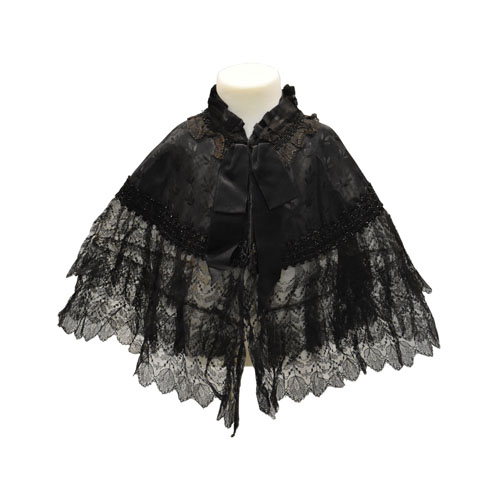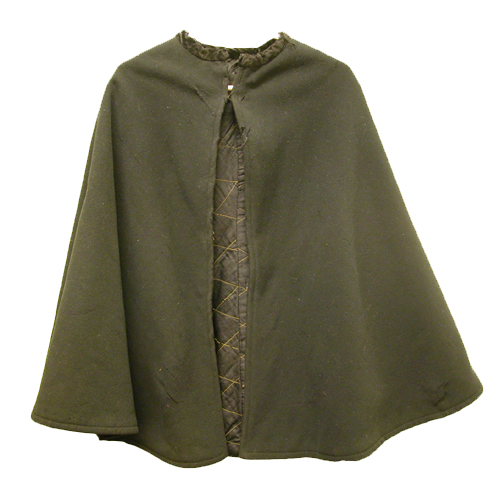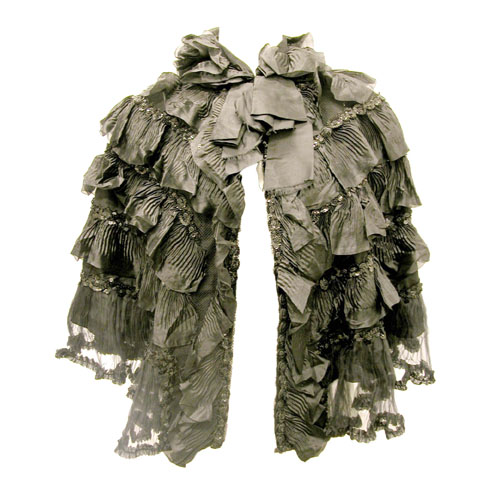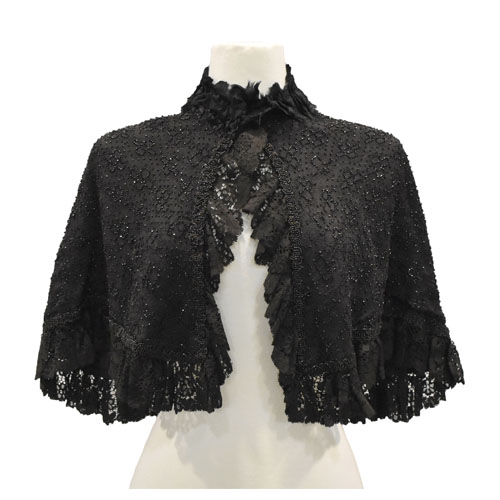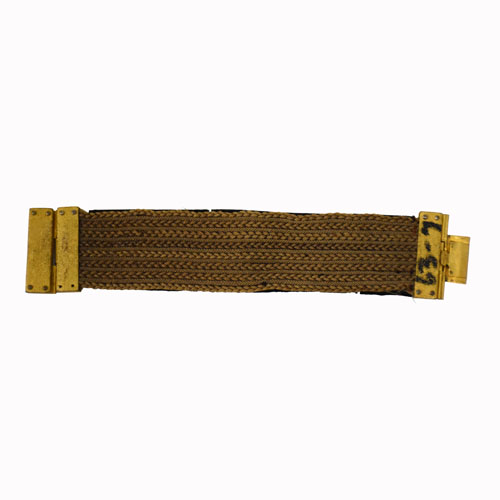Capes, in one form or another, were a key part of every lady’s wardrobe. By the late Victorian Age there were several different fashionable styles of capes, and cape-like garments. The ladies of Bruce were not ones to be left behind as far as fashion, and there are many great examples within the museum’s collection, proving just that.
Cape styles and materials were influenced by occasion (evening wear, mourning, etc.), season, and fashionable skirt styles. Earlier capes were loose and flowing, coming to either the elbow or hips in length. With the advent of the bustle, capes became short in the back, to allow room for the bustle to emerge, and long at the sides and front, to accent the fullness of the skirt. By the turn of the 20th Century that style had gone, and traditional capes were available alongside tippets (a garment of fur or wool that covered the neck and shoulders, and usually having ends hanging down in front), which in the 1901 T. Eaton’s catalogue are called caperines.
Bruce’s ladies seem to have preferred the traditional cape (either to elbow or hips) and the Dolman cape. Dolmans are defined as a woman’s mantle with cape-like arm pieces instead of sleeves. When worn, Dolmans give the appearance of a jacket, having defined shoulders, front buttons, etc. but there are no real arm holes. The back of the Dolman looks like a cape. Dolmans within the collection have various styles of “arms” from loose and flowy to short and beaded and materials range from velvet to taffeta to fur. Seemingly the most versatile of cape styles, it’s easy to see why Dolmans were popular; every lady could find or make one to suit their own personal style.
By the 1920s capes had been supplanted by the coat and jacket for preferred outerwear options, however capes were never truly gone. Often ladies evening coats or jackets featured wide collars that came over the shoulders, giving a cape effect. Even today, cape-like garments can be seen, and are making a comeback as part of a lady’s wardrobe.

